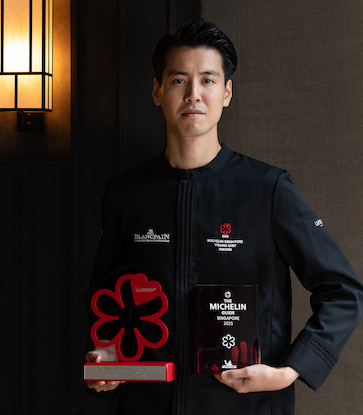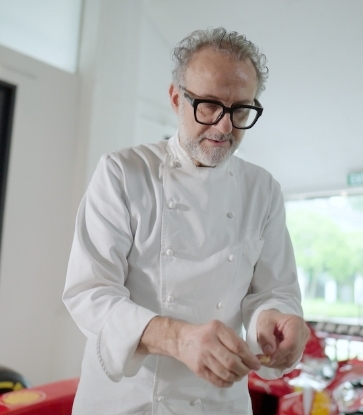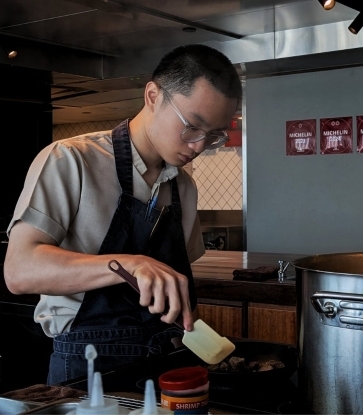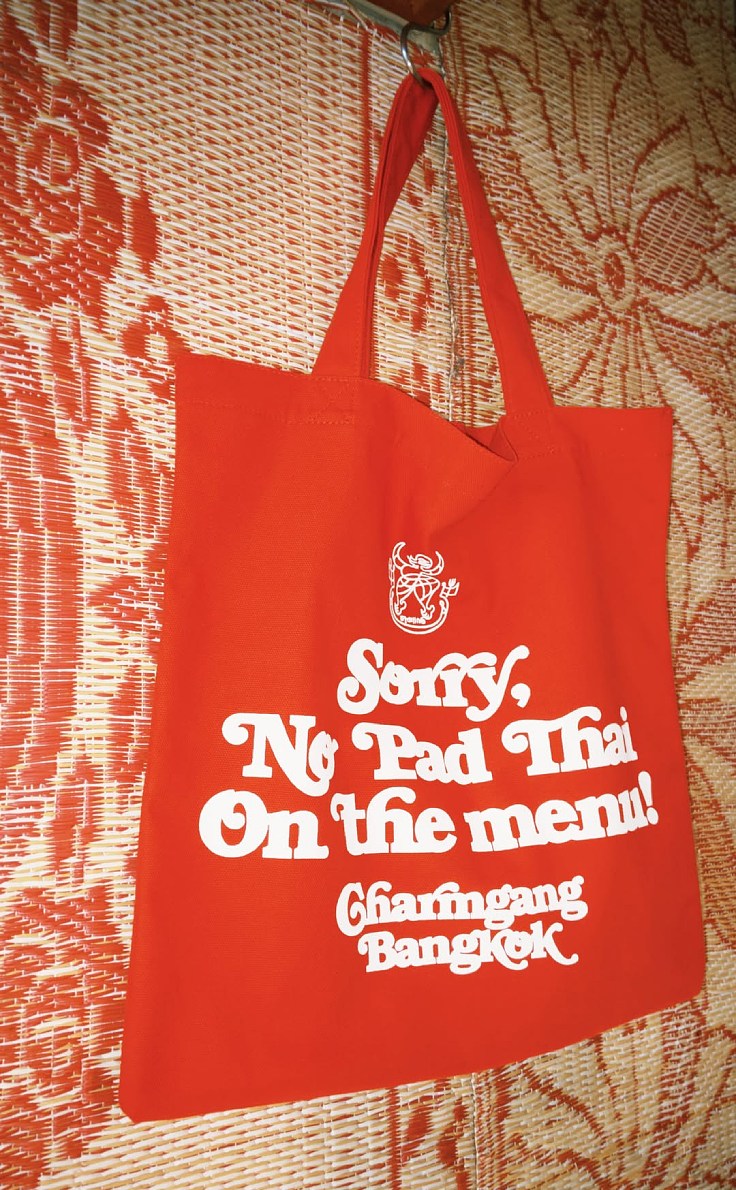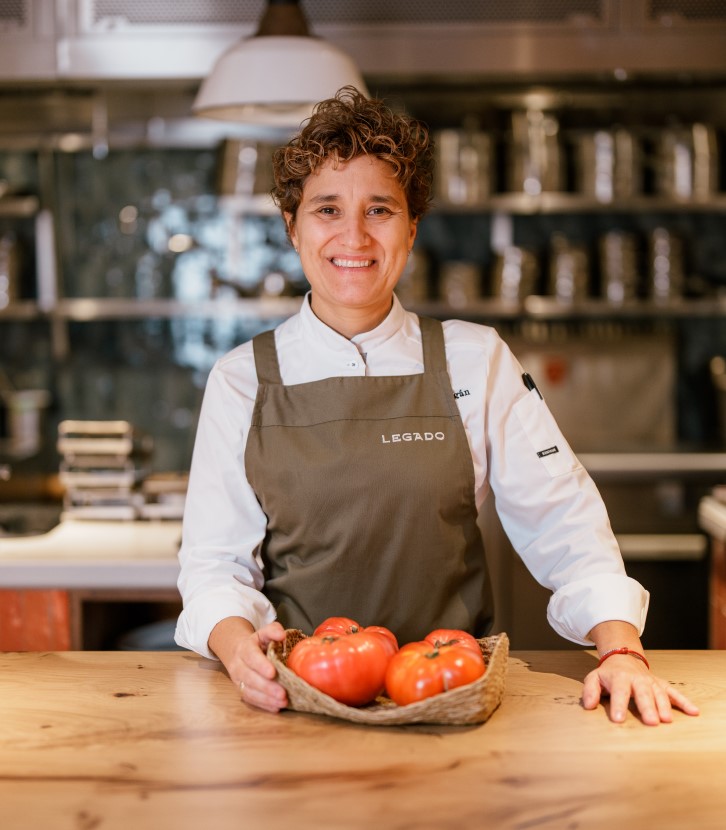Born in Singapore to an immigrant family, Chris Fong grew up navigating diverse cultures - Hong Kong and Malaysian traditions at home, and Singaporean influences at school.
After completing Singapore’s mandatory military service, Fong started as a designer but soon realised his passion lay in the culinary arts. He enrolled in culinary school, and an apprenticeship at Restaurant André (Singapore) elevated his perspective on cooking. “French culinary techniques showed me how simple ingredients can be transformed into something incredibly sophisticated,” Fong recalls.
.jpg)
Following this revelation, Fong pursued formal training at a French culinary school for two years. Yet, as he honed his skills, his fascination with Asian flavours and traditions slowly resurfaced.
In 2017, the Singaporean chef moved to Vietnam as an executive chef, and though the pandemic brought him back to Singapore temporarily, his heart remained in Vietnam. “I was drawn to Vietnam’s vibrant culture and untold stories,” he shares.
In September 2023, he opened Oryz, a fine dining restaurant where cultural storytelling meets culinary innovation. Just months after its debut, Oryz earned a spot in the MICHELIN Guide Vietnam 2024. Among its rotating menu, one dish stands out: Pho Satay, the highlight of the Cho Lon menu, where Vietnamese pho meets Teochew satay noodles in a bold fusion.
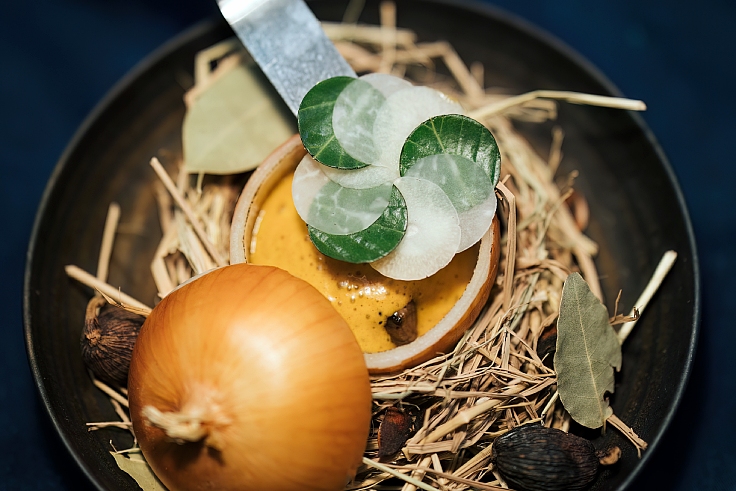
Becoming the Pho Satay
During his research for the Cho Lon menu, Fong discovered a noodle shop in Saigon’s Chinatown (Cho Lon) serving a unique dish called Pho Satay. This Teochew twist on traditional Vietnamese pho had quietly existed for years, largely unnoticed outside the local community.“I kept returning to the shop to taste the dish and talk to the owner about how it’s made,” he explains. “The challenging part was perfecting the satay sauce.”
Creating the right sauce required meticulous trials and errors. “I spent two weeks developing the sauce,” he recalls. “It’s a delicate blend of crispy peanuts, garlic, and spices, blended into a thick paste. The consistency needs to be just right so it doesn’t dilute too much when the stock is added.”

The science behind the dish
The satay sauce lies at the heart of Pho Satay’s unique identity. “The peanut-to-spice ratio has to be precise,” Fong explains. “If the peanuts overpower the spices, the flavour becomes flat. At the same time, the beef stock needs to complement the spices without overshadowing them.”“Traditional Teochew satay is not spicy, it’s more peanut-forward and mild. But the Pho Satay I encountered in Ho Chi Minh City’s Chinatown has clearly adapted to Vietnamese tastes. It incorporates bold spices and southern herbs, which add a subtle heat and depth to the dish.”
.jpg)
Secrets to his signature dish
At Oryz, Pho Satay is served inside a hollowed onion. The onion’s earthy sweetness subtly enhances the satay sauce and broth, making it an essential component of the dish. This thoughtful presentation also reinforces Fong’s vision of using food as a vehicle for cultural storytelling, connecting past and present with each bite.“Onions are key because they signify the transition from Teochew noodles to this Vietnamese Pho Satay,” the Singaporean chef further explains. “In traditional Chinese or Cantonese cooking, ingredients like daikon or sugarcane are used to sweeten broths, imparting a subtle sweetness. Onions, however, are not typically used in this way. On the other hand, in Vietnamese pho, onions bring a distinct sweetness and depth. By serving Pho Satay in an onion, we highlight this cultural shift, illustrating how the dish evolved through migration and adaptation.”

Telling lesser-known stories through culture-based gastronomy
Pho Satay is the perfect embodiment of the Cho Lon menu’s core mission: to celebrate the rich Vietnamese-Chinese culinary heritage of Saigon’s Chinatown.“Food is created by people,” Fong reflects. “When the Chinese migrated to Southeast Asian countries, they brought their culinary traditions, which evolved and merged with local ingredients and techniques to form entirely new cuisines.” For the mastermind behind Oryz, this process of culinary evolution, driven by migration and cultural exchange, often goes unnoticed in the mainstream food narrative.
Illustration image: © Mervin Lee/ MICHELIN Guide Vietnam




